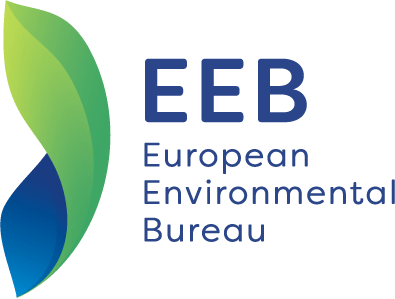One step closer towards making mercury history in the EU
Today, the European Commission adopted its long-awaited proposal for a revised mercury regulation in line with its commitment to ensure a toxic-free environment under the European Green Deal and the Chemicals Strategy for Sustainability.
We welcome the Commission’s proposal, considering mercury remains one of the most dangerous elements on Earth due to its high toxicity. Despite current legislation, mercury pollution remains a major issue, affecting people, nature and wildlife everywhere.
We comment the Commission for making words a reality, taking responsibility for what it exports to developing countries; yet the ban on linear (LFL) and non-linear fluorescent lamps should take place much faster.
If the EU bans exports of all these fluorescent lamps from the EU-27 starting on 31 December 2025, it will avoid 470 million lamps from being shipped between 2026 and 2035. The ban would therefore eliminate 2.6 metric tonnes of mercury from the environment through lamps and avoided power station emissions. With the date pushed back to the end of 2027 around 35% of this mercury will go into the environment.
Satish Sinha, Associate Director at Toxics Link, Associate member of the EEB and member of the Zero Mercury Working Group said:
“This is a very important step from the EU, and we welcome it. The export bans, however, need to happen faster. With the lack of an effective and safe collection and recycling system for mercury-bearing lamps in the country, such imports from the EU represent a real menace to people’s health and the environment.”
As the EU protects its citizens and nature, countries in the EU should not further expose communities and the environment in low- and middle-income countries to the toxicity of mercury by exporting mercury added products banned in the EU. These exports are unethical, and we therefore welcome the proposal of the EU Mercury Regulation which seeks to stop this unacceptable double standard.
After over a decade since the EU consultants had already proposed a total dental amalgam ban, we very much welcome the proposal from the Commission to phase out dental amalgam by 1st January, 2025. This early phase-out is not only realistic, but also necessary considering that dental amalgam represents the largest remaining EU mercury use. It will prevent “new” mercury from (re)entering the EU environment. It is greatly commendable that in line with the above, the EU is now proposing to also ban the exports of dental amalgam by that same date.
However, we regret that the Commission does not foresee to regulate mercury emissions from crematoria. The cremation of the dead is a significant source for the releases of mercury in the atmosphere, with yearly emissions to air estimated at 1.6 tonnes in 2018. However, the cumulative emissions expected given the mercury carried in people’s mouths needs to be calculated. While (new) dental amalgam, causing such emissions, will be phased out, there are over 1000 tonnes of mercury ‘walking’ around on peoples’ mouths in the EU and big part of that could end up in the environment.
If the Commission wants to effectively address mercury pollution and exposure, it should also adopt an EU-wide mercury specific emission limit value (ELV). This is clearly a missed opportunity.
Charline Cheuvart, Policy Officer on Mercury said:
“The proposal comes at a critical time, as Parties around the world are preparing to meet again at the end of October at the next Conference of Parties of the Minamata Convention on Mercury (COP5). We hope that the co-legislators will rapidly take an ambitious position to further strengthen the Commission’ s proposal and spearhead discussions at the global level and show to the world EU’s intention to deal a final blow to mercury.”
END
For more info, please contact:
Elena Lymberidi-Settimo, elena.lymberidi@eeb.org; +32496532818
Charline Cheuvart, charline.cheuvart@eeb.org
Notes to the Editor:
- For decades, mercury was seen as useful for industry and the manufacture of certain products. But science and experience showed us that mercury is highly toxic and can have a devastating impact on the environment and people’s neurological system. Yet, mercury levels measured in biota continue to exceed environmental quality standards in almost all surface water bodies and each year, a third of EU born babies have mercury levels above “the recommended safe limit”. At a time when there are safe substitutes and easy-to-implement measures to counter mercury pollution, the EU must seize the opportunity to protect the environment and health of the next generations to come in both the EU and worldwide.
- Mercury-free fillings are now widely used in the EU at a rate of 81-90%, showing that practices have shifted away from the dental amalgam.
- Joint statement on Mercury Added Lamps, 21 October 2022
- Letter to Director Manfredi on EU Mercury Regulation, 21 October 2022
- Revision of Regulation (EU) 2017/852 on Mercury – Open Public Consultation, 11 May 2022

